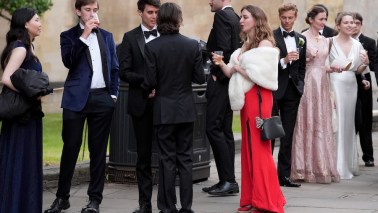Photographs of roadworks feature regularly in the Hampstead Village Voice but, even with the postmodern fashion for grungy subjects, no contemporary residents have made paintings of them. Yet that, astonishingly, was what Ford Madox Brown did in the 1850s, lugging his two-metre canvas on to The Mount, off Heath Street, to do it.
Brown’s unlikely masterwork ‘Work’ was the first ‘Pre-Raphaelite’ painting bought by Manchester Art Gallery, where it is now the centrepiece of a major exhibition dedicated to the artist. I put ‘Pre-Raphaelite’ in inverted commas because Brown — a prickly individual with a deep distrust of all ‘Bodies, Institutions, Art unions & academies’ — was never strictly a member of the Brotherhood. So touchy was he that he even walked out of the official opening of Manchester Art Gallery in 1885 over the rejection of another painting, ‘Waiting’ — despite being then in the employ of the city. Manchester Corporation’s commission for 12 murals for Alfred Waterhouse’s new Town Hall kept him from starvation for the last 13 years of his life, but Brown never let personal advantage stand in the way of a good sulk or a sideswipe at civic pomposity. In his mural of ‘The Opening of the Bridgewater Canal’, he showed the teetotal Lord Bridgewater getting drunk.
Unlike the Academy-educated Pre-Raphaelites, Brown was born in France and trained to paint in the grand historical manner in Belgium. But a trip to Italy in 1845 with his consumptive first wife Elisabeth opened his eyes to the even light of the Quattrocento, and determined him to treat ‘the light and shade absolutely as it exists at any one moment, instead of approximately, in a generalised style’. While his lighting became Italianate, his inspiration remained resolutely British.








Comments
Join the debate for just £1 a month
Be part of the conversation with other Spectator readers by getting your first three months for £3.
UNLOCK ACCESS Just £1 a monthAlready a subscriber? Log in